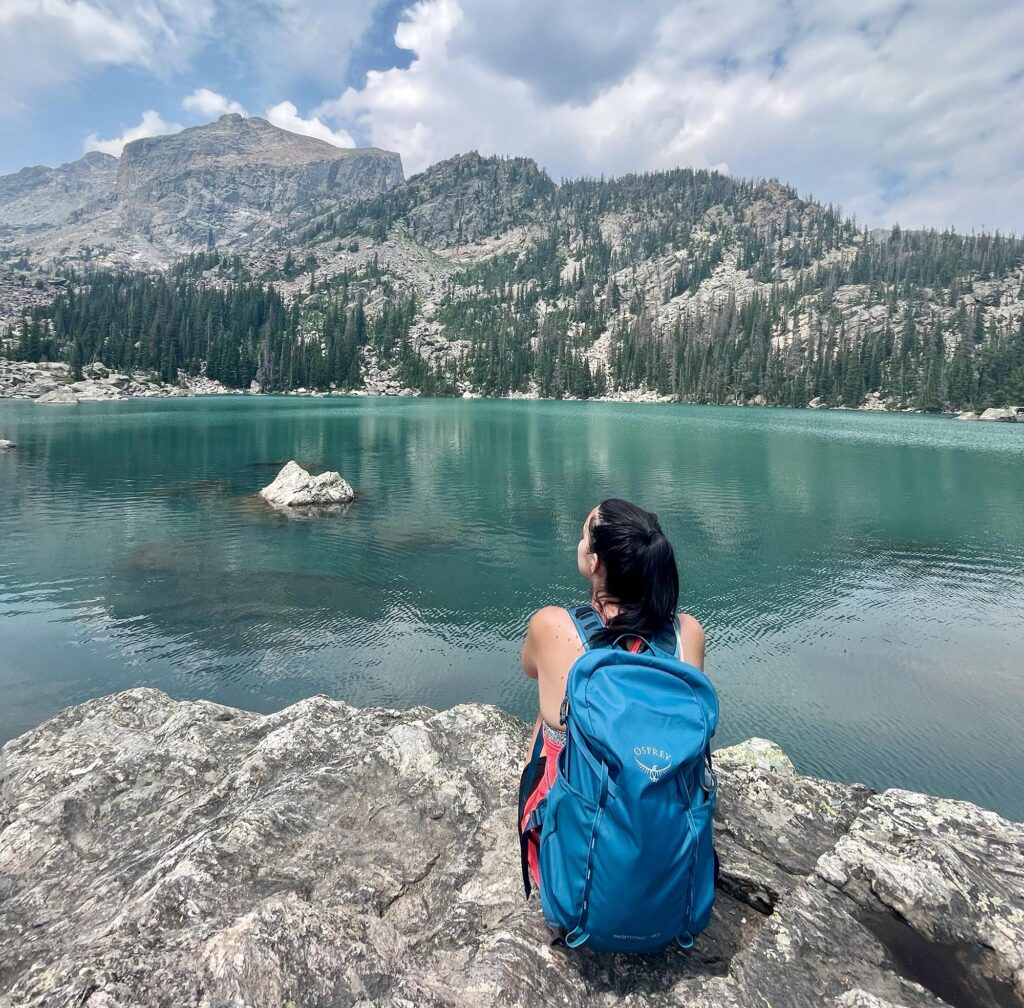Embarking on a hiking adventure is a thrilling experience that demands more than just enthusiasm; it requires the right gear to ensure safety, comfort, and enjoyment.
This guide delves into the essential hiking gear you should have before heading out on the trail. I detail my favorite gear as well as other brands and types of gear that I’ve read about. After all, it’s about what works best for you and is most comfortable for you!
Footwear
Your choice of hiking boots can make or break your adventure. Below are some of the best boots on the market, but the most important things to look for are:
- Excellent traction, ensuring stability on various terrains
- Gore-Tex technology for waterproofing
- Breathable membranes to keep your feet cool on long treks
There are also different types of footwear, from trail running shoes, to hiking shoes, to hiking boots. They are used in different situations. I have hiking shoes and hiking boots (both Salomon) and I typically wear the shoes on shorter, easier hikes and the boots on long or very rocky hikes where I’ll need the ankle support.
Some of the best brands to look for in hiking footwear are Salomon, Merrell, Keen and La Sportiva. It’s hard to go wrong with any of these and really all comes to down to which fits your foot the best.
Backpacks
Much like footwear, a hiking backpack can make or break your experience. Something most people wouldn’t expect! But this is especially true for longer hikes. Osprey and Camelbak are industry leaders, for a reason, but there are also some great lower cost options from REI and Gregory. I personally am an Osprey girl through and through. They are very comfortable and supportive, which makes a huge difference on longer hikes.
When choosing your pack, consider the length of your hikes—daypacks like the Osprey Sportlite, Osprey Skarab or Camelbak Octane are perfect for short excursions. Also look for features like a hydration reservoir sleeve, adjustable torso length, and multiple compartments for organized packing.
When looking for backpacking packs, you of course need a much larger size and comfort is key. These typically come in 50 or 65 L size options, so it’s important to figure out how much you can handle carrying and how much stuff you’ll need to be bringing on your trip(s). The Osprey Atmos AG and Aura AG packs are really great choices as well as the REI Flashpack.

Apparel
Patagonia, Arc’teryx, and Columbia are trailblazers in hiking apparel. It’s important to always pack for changes in temperature and changes in weather, especially when going on a longer hike or to higher elevations. Merino wool base layers, like those from Smartwool, are great for cooler hikes as they regulate temperature, and they resist odor.
It’s recommended to always pack a rain coat. To take advantage of limited space, there are some great packable coats that take up very little space in your pack. Patagonia’s Nano Puff insulated jacket is a standout in this area as it provides warmth and great water protection all while it packs up to about the size of your hand!
Another important piece of apparel is socks! The right socks can make just as much of a difference as the right shoes. Smartwool and Darn Tough make the best hiking socks around.
Navigation Tools
Before setting out on any hike, it’s very important to know how you are going to navigate your way out and back. Remember, on many hikes you will not have cell phone service! One of the simplest ways to achieve this is to download the AllTrails app. This app is my gold when hiking as you can find, save and navigate tons of trails. If you pay for the premium version, there’s also an option to download trails map to your phone for offline use. This is very helpful when you lose that cell service! It also alerts you when you are off the trail.
A great tool to get if you plan on hiking a lot or doing a lot of backcountry trails is a navigation device. Garmin’s GPSMAP series and Suunto’s Traverse Alpha are reliable GPS devices for accurate navigation. Pair these with a detailed topographic map and a quality compass, like the Silva Ranger, to hone your navigation skills.
Trekking Poles
I wouldn’t say that trekking poles are a must, be they are especially helpful for longer hikes like backpacking or if you want additional support for your knees and back. Poles also provide greater stability on rocky trails. Black Diamond’s Trail Ergo Cork, Leki’s Micro Vario Carbon, and REI’s Flash Carbon are exemplary trekking poles. Adjustable height, ergonomic grips, and shock absorption make these essential for stability, especially on challenging terrain. Foldable designs enhance portability when not in use.
Water Filtration: Hydration is Non-Negotiable
Even if you are planning to go on a short hike, it is a very good idea to keep some kind of water filtration option in your pack, just in case you somehow get lost and need to stay out longer than planned. Sawyer’s Squeeze Water Filter, Katadyn’s BeFree Water Filtration System, and LifeStraw’s Personal Water Filter provide reliable water purification. These compact and efficient tools ensure a safe water supply during your hike. Consider the ease of use, flow rate, and maintenance when choosing a water filtration system.
Conclusion:
Equipping yourself with the best hiking gear is not just about having the latest technology; it’s about understanding your needs and the demands of the terrain you’ll be exploring. Invest time in researching and testing gear before your journey. With the right equipment, each step becomes a confident stride toward unforgettable outdoor adventures. So, gear up, choose wisely, and let the trails lead you to new heights of exploration!

